Another year, another season of thrift. My commitment to the secondhand life is long-standing, and hardly needs reaffirmation, but it’s nice to start a new chapter with clear intentions, isn’t it? The Memoir That Probably Never Will Be is basically my ode to secondhand and the ways in which it has changed my life. Sounds hyperbolic, but I assure you it isn’t. Here is an excerpt from the last draft of the MtPNWB, which represents one of my attempts to articulate the life-changing magic of thrifting:
At its core, a treasure hunt isn’t about consumption; nor is it about an object. It’s about a process of discovery, a way of looking at the world. When people say that one man’s trash is another man’s treasure, it’s usually in reference to the subjectivity of value-making, which is, of course, an idea so obvious as to be trite. But what if we looked at it, not as theory, but as praxis? To me, it speaks directly to what I find most meaningful and satisfying about treasure hunting: the practice of looking for beauty in humble places and in small moments, guided by the compass of my own values. It calls for a curious mind which is, itself, a kind of practice, a way of engaging with the world: mindfulness married to openness to learning. Rick Rubin wrote that “[l]iving in discovery is at all times preferable to living through assumptions,” and I think about that at least once a week. To live in discovery: I can’t think of a more joyful way to live.
This might seem like an odd way to start what is intended to be a practical discussion, but I think this is a good time to re-establish the table stakes. It was discouraging to witness, once again, the social media spectacle around the consumption-fest bookended by Black Friday and Boxing Day. I would like to think that it’s a reflection of corporate desperation to buck up a system that is going off the rails, rather than actual human behaviour, but who knows. I can only do my part, and that includes sharing my perspective, in both actions and words. Actions do speak for themselves, of course, and they’re often a more effective form of persuasion even if the impact takes longer to be felt. But words have their magic too. So I’m saying the quiet part out loud today.
Ok, but this post promised you a list, and a list you shall have.
Now, I think you know me well enough to know that I wouldn’t dream of telling you what clothing to buy. Personal style is personal. Trends are suggestions, not mandates. My list today is about something else: finding value at the thrift store. Of course, value is also subjective, so what you’re getting is pure opinion. Proceed accordingly 😉
Leather Jackets
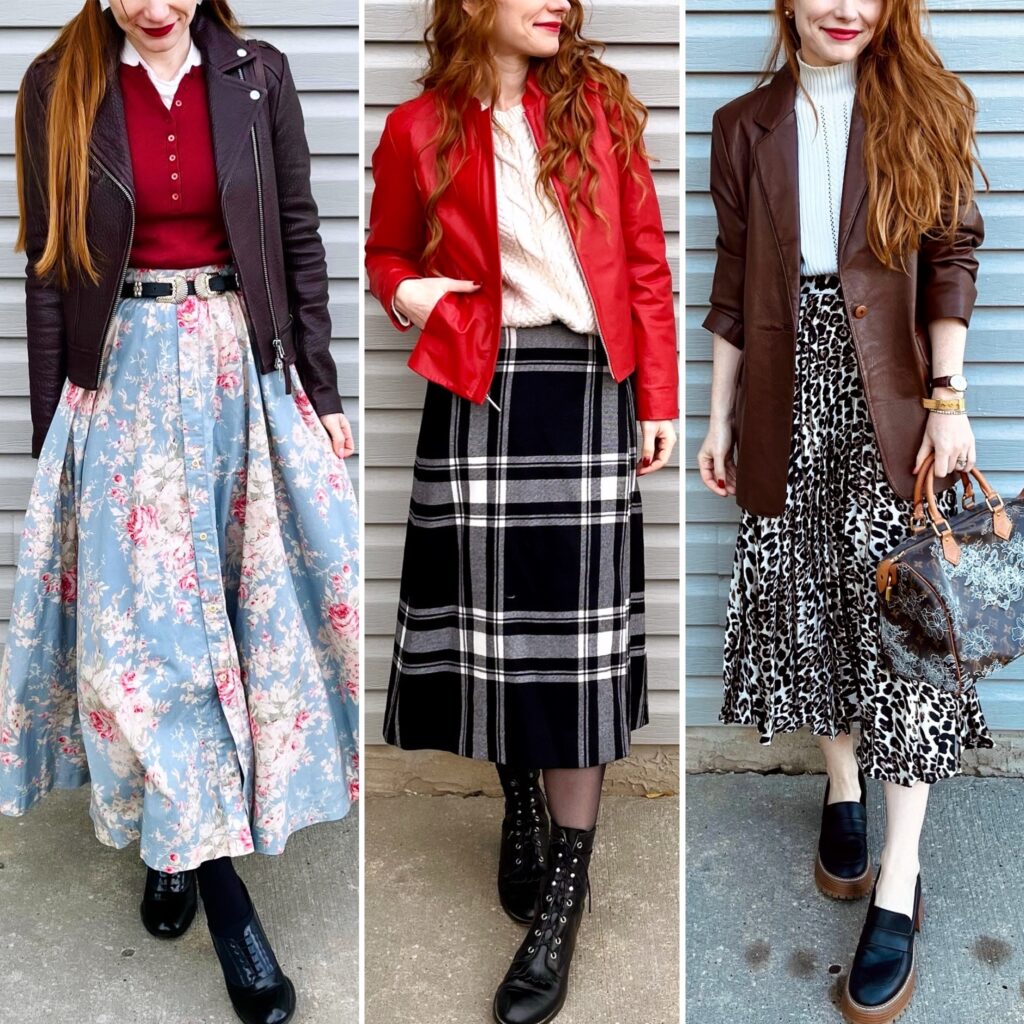
Leather jackets are both trendy and classic. That is to say, styles of leather jackets cycle in and out of popularity; as a concept, leather jackets never really go away. If your climate permits, a leather jacket can be a fabulous outerwear option. They can be dressed up and down and are wonderful in juxtaposition (whether against other materials and textures, or an opposing aesthetic). Secondhand leather offers many advantages. Environmentally, the most sustainable materials are those already in circulation, and this is particularly true with leather. Even with ever-increasing thrift prices these days, secondhand leather jackets cost a fraction of retail. Why pay $500+ when you can pay $50 or less? And styles tend to be recycled with minimal innovation between trend cycles, which means that the 20-year old version of today’s trendy jacket is going to be quite similar. Plus, it has the added cachet of being “vintage”, which is everyone’s favourite buzzword at the moment.
The main thing to watch out for when it comes to thrifting leather jacket is smell. More people smoked in the 80s and 90s, and their leather jackets have probably been hanging in a closet, unaired, for years. While perhaps not impossible, getting cigarette smells out of leather is a hassle I recommend avoiding if you can. Personally, I also avoid buying suede jackets that have water or other stains on them because the rehab process looks rather more involved than I want to attempt. Absent those complications, cleaning leather jackets is fairly straightforward. I wipe the leather down with a moist towel (or brush with a suede brush, if applicable), then steam clean the interior lining and spray it liberally with vodka.* Between those two, most germs and smells are eradicated.
Wool and Cashmere
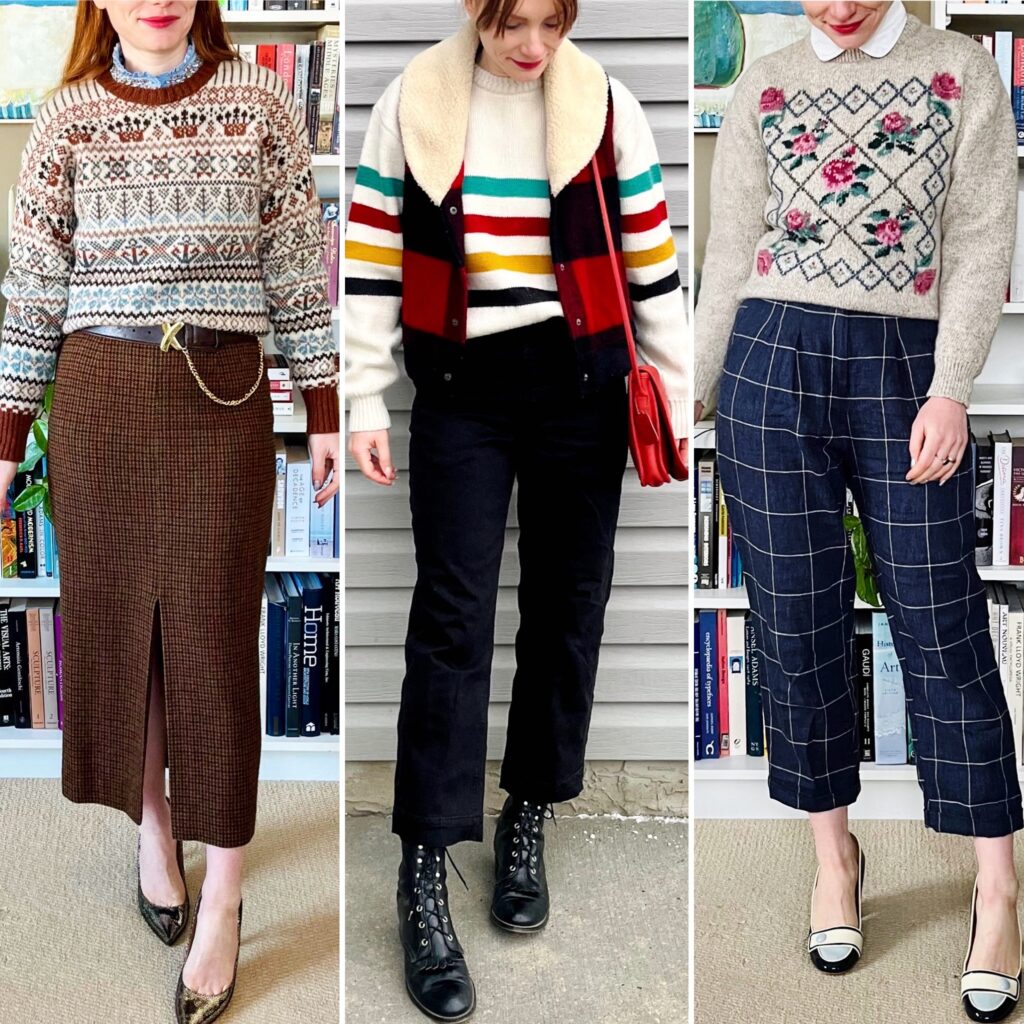
Good quality wool and cashmere is hard to come by these days. So many items advertised as such are, in fact, made from blends that almost inevitably include polyester or acrylic. I am not categorically against polyester, but I don’t like it in knit garments like sweaters. It doesn’t insulate as well, it traps odours more, and it doesn’t wear as well as natural fibers. Polyester and acrylic knits gets pilly easily and can’t be rehabilitated by a sweater shaver as well as wool.
Wool and cashmere is, of course, much cheaper to buy at the thrifts than retail, and still relatively easy to find. Vintage sweaters often come in fun patterns, which means they can be unique statement pieces. I also love stocking up on “basics” like merino wool turtlenecks, which are great for layering.
Belts
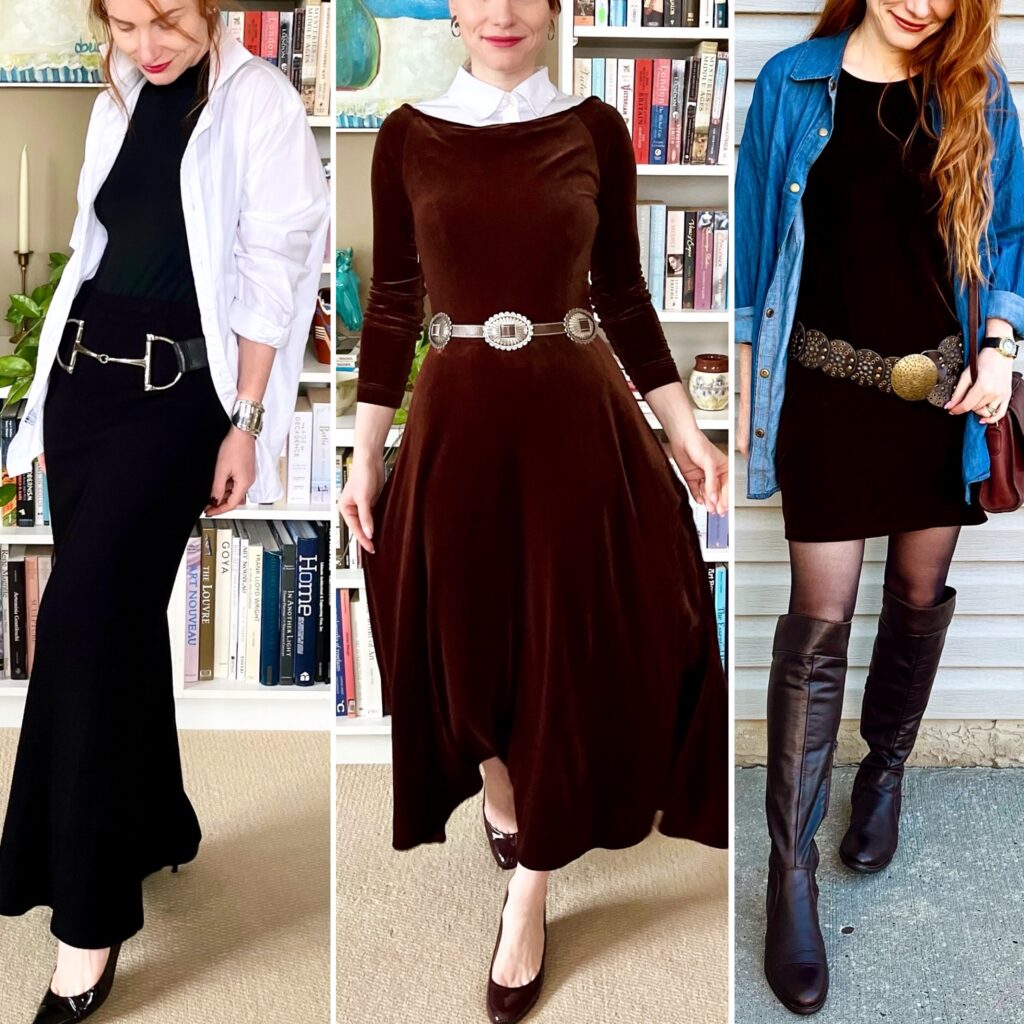
If, like me, you consider belts a key outfit-making accessory, head to the thrifts. You will find a much more varied, and better-made, selection there than at the mall. Fun colours, funky buckles, interesting styles and designs. Most of the time, they will be leather as well – and under $10. The only downside is that a lot of vintage women’s belts tend to fit small. Men’s belts can be a good alternative when it comes to basic styles and neutral colours.
Men’s Shirts
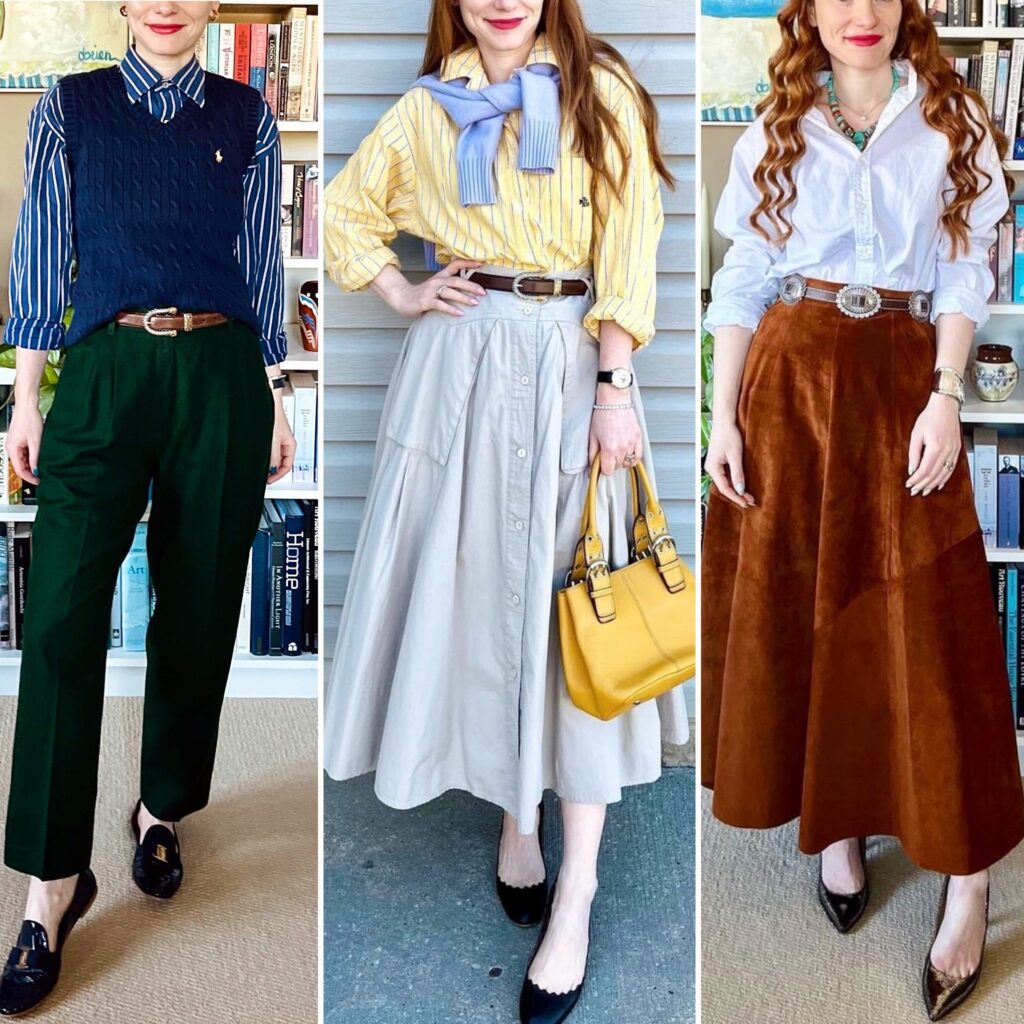
I love men’s shirts. You can instantly change up the vibe of a basic jeans-and-tee outfit by substituting a men’s shirt, without losing any comfort. Vintage ones, especially, are great; they’re usually made from lovely, thick cotton that has a nice drape. I tend to buy them oversized because that gives me a lot of styling options. Wear them open, buttoned up, tied at the waist, even wrapped. So many possibilities! You can also cut them up into dickies; perfect layering pieces when you want to add a pop of collar to an outfit without having to deal with the extra bulk of sleeves or shirt-fronts.
Good quality men’s dress shirts are hella expensive, but the thrift stores are filled with them, often in like-new condition, for under $20 a piece. Vintage Ralph Lauren and Tommy Hilfiger are my favourite, because I love the cotton they used in the 90s and early 2000s. Always check the inside of the collar and armpits for signs of wear.
Jeans
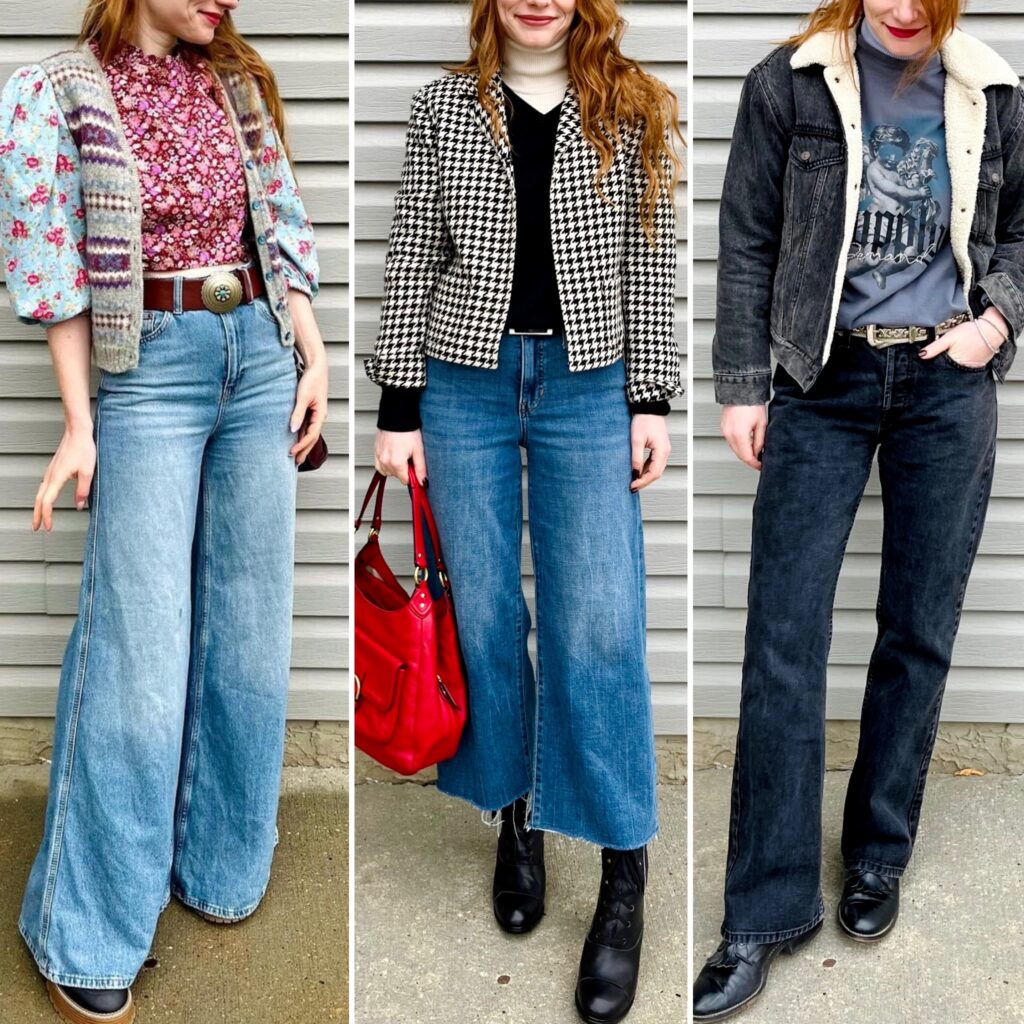
Across pretty much every metric, jeans are some the most resource-intensive items of clothing to be produced. Given how much denim the fashion industry pumps out every year, I shudder to think about the environmental impact. I can think of no other single category of clothing that is as over-represented in thrift stores as jeans. There are plenty of secondhand jeans to satisfy demand, across a wider spectrum of sizes than is available for other clothing, and no shortages of styles – enough to satisfy the next half dozen trend cycles, I’m sure. For the most part, there is no need to buy new jeans. And that’s my goal. One less new pair of jeans means 3,781 fewer litres of water used up. It all adds up.
*Cheap vodka works fine. We’re going for the alcohol content, not the taste. In fact, rubbing alcohol is just as effective (or, in fact, more so given its higher concentration). However, vodka is typically considered to be gentler on fabrics and less likely to cause damage or discoloration. Some people mix essential oils, like lavender, into their vodka spray but I don’t bother.

Love this, thanks. I really felt those first three paragraphs. Still hoping to read your book some day.
And belts! Cannot stop myself from looking at them at the thrift stores. (Only wear them at the hip though, so definitely can’t use the shorter ones, limits me a little. Still find lots of good ones!)
Excellent food for thought, as always! I need to be more intentional about my list to focus on.
I was hoping to see men’s shorts followed by short skirts (even though I know that isn’t traditionally your style 😉).
Well, I think you can thrift anything and everything, but I tried to focus on very general/generic categories where the thrifts can really deliver incredible value.